
Best Vascular Specialists Of Long Island
Vascular Laboratory of Long Island
Heart and Health Medical is proud to announce the opening of our brand-new, cutting-edge Vascular Laboratory & Wound Care Center in Massapequa, New York. This state-of-the-art facility is dedicated to providing the highest quality vascular care and testing services in Long Island.
Our centrally located vascular lab is equipped with the latest diagnostic and screening equipment, ensuring that we can deliver top-notch care to the local community. Our commitment is to offer high-quality, affordable testing and treatment options to the residents of Long Island.
One of the key features of our Vascular Laboratory & Wound Care Center is its role as the home of the Heart and Health Hemodialysis team. This addition allows us to provide comprehensive care to patients with various medical needs, ensuring that they receive the specialized attention required.
We understand the importance of early diagnosis and effective treatment when it comes to vascular conditions, and our state-of-the-art facility is well-equipped to meet these needs. At Heart and Health Medical, we are dedicated to the well-being of our patients and are excited to bring these advanced services to the Long Island community.
Vascular Testing & Consultation
Contact a vascular specialist and book a consultation to discuss your symptoms, testing & diagnosis, and/or treatment options.
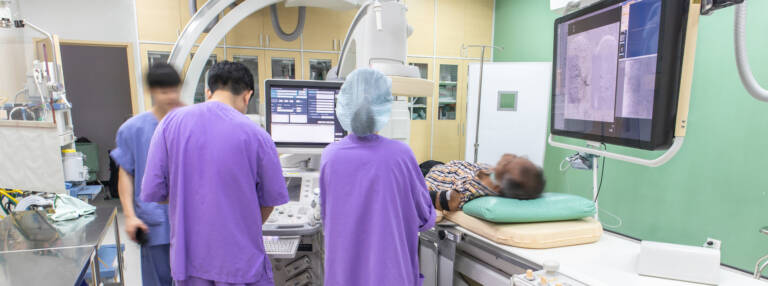




Vascular Specialists Near Me
Varicose Vein Specialists
What Are Varicose Veins?
Varicose veins are a common condition characterized by the swelling and twisting of veins located just beneath the skin, typically occurring in the legs. These veins develop due to weakened or damaged vein walls and valves, leading to the improper flow of blood. The primary cause of varicose veins is an increase in blood pressure within the affected veins.
Treatment For Varicose Veins
Heart and Health Medical offers a range of procedures for the treatment of varicose veins, tailored to each patient’s specific needs. Larger varicose veins are typically addressed through a combination of ligation and stripping, laser treatment, and radiofrequency treatment. Smaller varicose veins and spider veins, on the other hand, are commonly treated with sclerotherapy or laser therapy on the skin. Here is a list of some of the procedures available for varicose vein treatment at our facility:
- Sclerotherapy
- Foam sclerotherapy for large veins
- Laser treatment
- Catheter-assisted procedures using radiofrequency or laser energy
- High ligation and vein stripping
- Ambulatory phlebectomy
- Endoscopic vein surgery
Our specialists work closely with patients to determine the most suitable treatment plan based on their individual condition and needs.
Untreated Varicose Veins
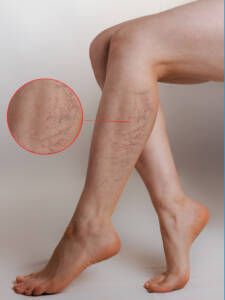
Treated Varicose Veins
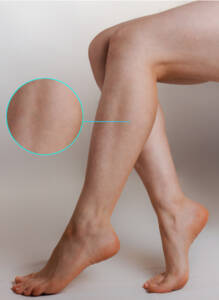
Long Island Vascular Laboratory
Located at 6175 Sunrise Hwy, Massapequa, NY 11758
Long Islands Best Vascular Lab
Heart and Health Vascular Laboratory Services
Vascular Diseases
Coronary artery disease (CAD), also known as coronary heart disease, is a medical condition characterized by the accumulation of plaque inside the coronary arteries. These arteries are responsible for supplying oxygen-rich blood to the heart muscle.
The plaque is composed of substances such as fat, cholesterol, calcium, and other materials present in the blood. The condition in which plaque accumulates within the arteries is called atherosclerosis. This process leads to the narrowing of the arteries, reducing the flow of blood to the heart muscle. Additionally, it increases the risk of blood clot formation within the arteries, potentially causing partial or complete blockages in blood flow.
Arteries are equipped with muscular walls that help generate the necessary pressure for the delivery of oxygen to various parts of the body. However, like the coronary arteries of the heart, the development of high cholesterol levels, inflammation, and vascular injuries can lead to the formation of atheromas, which are cholesterol-rich plaques, within the arterial walls. Over time, these plaques can accumulate and cause significant blockages in the arteries, reducing the blood flow to tissues located downstream. This decreased blood flow can have adverse effects on the affected tissues and organs.
An abdominal aortic aneurysm refers to the swelling or bulging of the aorta, a major blood vessel, in the abdominal region. This condition typically occurs due to the weakening of the aortic wall. The bulge or “balloon” forms as it fills with blood. Over time, the weakened area can rupture, which can be extremely dangerous. A ruptured abdominal aortic aneurysm can lead to internal bleeding, hemorrhaging, and severe pain. This is a life-threatening emergency that requires immediate medical attention and intervention.
- Abdominal Aortic Aneurysm
- Aortic Dissection
- Aortoiliac Occlusive Disease
- Carotid Artery Disease
- Chronic Venous Insufficiency
- Deep Vein Thrombosis
- Fibromuscular Disease
- Giant Cell Arteritis
- Hyperlipidemia
- Kidney Disease
- Mesenteric Ischemia
- Peripheral Arterial Disease
- Portal Hypertension
- Pulmonary Embolism
- Stroke
- Thoracic Aortic Aneurysm
- Thoracic Outlet Syndrome
- Varicose Veins
- Vascular Trauma
- Vasculitis
Vascular Laboratory Treatment Options
- Abdominal Aortic Aneurysm Repair
- Amputation
- Angioplasty/Stenting
- Atherectomy
- Carotid Endarterectomy
- Carotid Stenting
- Compression Stockings
- Dialysis Access
- Drug Therapy for Varicose Veins
- Embolization
- Embolotherapy
- Endarterectomy
- Endovascular Abdominal Aortic Aneurysm Repair
- Endovascular Stent Graft
- Endovascular Thoracic Aneurysm Repair
- Endovenous Laser Treatment
- Incisionless AAA Repair
- Laser Therapy for Varicose Veins
- Lower Extremity Vascular Reconstruction
- Medications
- Mesenteric Ischemia Surgery
- Minimally Invasive Surgery
- Percutaneous Closure for Varicose veins
- Portal Hypertension Surgery
- Radiofrequency Ablation
- Sclerotherapy
- Skin Graft
- Surgery for Diabetic Foot Ulcers
- Surgery for Stroke Prevention
- Surgical Aneurysm Repair
- Surgical Bypass
- Thoraco-Abdominal Surgery
- Thrombolysis
- Transcarotid Artery Revascularization
- Treatment of Hypertension
- Vascular Disease Screenings
- Vein Ablation
- Vein Stripping
- Vena Cava Filters
- VenaSeal
- Venous Access
- Venous Thrombectomy
- Wound Care
Vascular Screening & Tests
Angiogram
An angiogram is a medical imaging procedure that involves the use of X-rays to examine blood flow in the arterial system. During the procedure, a contrast agent, typically containing iodine, is injected into the bloodstream to make the blood vessels visible on X-ray images. This allows healthcare providers to assess the presence of blockages, narrowing, or other abnormalities in the arteries. Angiograms are commonly used to diagnose and evaluate conditions such as coronary artery disease, peripheral artery disease, and aneurysms.

Ankle-Brachial Index or ABI Test
An ankle-brachial index (ABI) test is a simple and non-invasive diagnostic procedure used to assess blood flow in the arteries of the legs and arms. It is typically performed to evaluate the presence of peripheral artery disease (PAD), a condition in which the blood vessels in the extremities become narrowed or blocked by atherosclerosis (plaque buildup).
During the ABI test, blood pressure measurements are taken at two different locations:
The ankle: Blood pressure is measured at the dorsalis pedis artery in the foot and the posterior tibial artery behind the ankle.
The brachial artery: Blood pressure is measured in the arm, typically using a blood pressure cuff placed around the upper arm.
The blood pressure in the ankle is compared to the blood pressure in the arm to calculate the ankle-brachial index. A normal ABI value typically falls within the range of 0.90 to 1.30. A lower ABI value indicates reduced blood flow to the legs, which may suggest the presence of PAD.
The ABI test is a valuable tool for diagnosing and monitoring PAD and can help healthcare providers determine the severity of the condition and plan appropriate treatment strategies, such as lifestyle modifications, medications, or surgical interventions, to improve blood flow to the extremities.
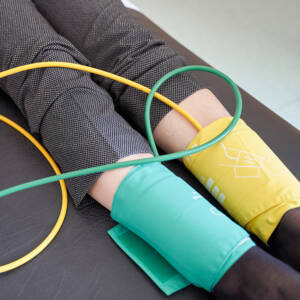
Carotid Duplex
A carotid duplex ultrasound is a non-invasive imaging procedure that uses high-frequency sound waves, also known as ultrasound, to visualize the carotid arteries in the neck. These arteries are essential because they supply blood to the brain. The purpose of the carotid duplex ultrasound is to evaluate the condition of these arteries and detect any narrowing or blockages, which could increase the risk of stroke or other cardiovascular problems.
Here’s how the procedure typically works:
Preparation: The patient usually lies on an examination table, and a clear gel is applied to the skin over the carotid arteries in the neck.
Ultrasound Probe: A handheld ultrasound device, called a transducer, is gently moved over the skin in the neck area. The transducer emits high-frequency sound waves, which bounce off the blood vessels and create images on a computer screen.
Image Creation: The sound waves create real-time images of the carotid arteries, including their structure and the flow of blood within them.
Assessment: A healthcare provider or ultrasound technician interprets the images to assess the condition of the carotid arteries. They look for signs of plaque buildup, stenosis (narrowing of the arteries), or other abnormalities.
The results of the carotid duplex ultrasound can help determine if there is any significant blockage or narrowing in the carotid arteries, which may require further evaluation or intervention to reduce the risk of stroke. This procedure is an important tool in diagnosing and managing conditions that affect the blood vessels leading to the brain.
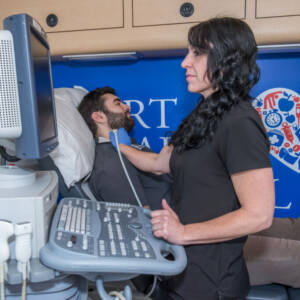
64 Slice CT Angiogram
A 64-slice CT angiogram, also known as a computed tomography angiogram (CTA), is a medical imaging technique that uses advanced CT scanning technology to produce detailed images of blood vessels, particularly arteries, without the need for invasive procedures such as catheterization or the use of contrast dyes. This imaging method is commonly used to assess and diagnose conditions involving the blood vessels, including the detection of arterial blockages or narrowing.
Here’s how a 64-slice CT angiogram works:
Patient Preparation: Before the procedure, the patient may be asked to fast for a few hours and remove any metal objects or clothing that could interfere with the CT scan. They are positioned on an examination table.
Intravenous (IV) Line: A small IV line may be inserted into a vein, usually in the arm, to inject a contrast dye. This contrast dye helps highlight blood vessels and enhances the quality of the images.
Scanning Process: The CT scanner, equipped with 64 detector rows or slices, rapidly rotates around the patient while taking cross-sectional X-ray images of the area of interest. These images are captured in thin slices, providing detailed views of the blood vessels.
Contrast Injection: As the CT scan progresses, the contrast dye is injected through the IV line to visualize the blood vessels more clearly.
Image Reconstruction: The computer processes the collected data to create 3D images of the blood vessels. These images can be viewed in various planes and orientations.
Image Analysis: A radiologist or healthcare provider reviews the images to assess the condition of the arteries, looking for any blockages, narrowing, or abnormalities.
A 64-slice CT angiogram is especially useful for diagnosing conditions such as coronary artery disease (CAD), peripheral arterial disease (PAD), and evaluating the blood vessels in other parts of the body. It provides clear and detailed images that help healthcare professionals make accurate diagnoses and treatment decisions without the need for invasive procedures.

Duplex Ultrasound
Duplex ultrasound is an imaging procedure that combines two types of ultrasound techniques to evaluate blood flow and detect blockages or abnormalities in arteries and veins. It is a non-invasive and safe diagnostic tool commonly used to assess vascular health. Here’s how duplex ultrasound works:
Ultrasound Technology: Duplex ultrasound uses high-frequency sound waves (ultrasound) to create images of the blood vessels and their surrounding tissues. These sound waves are emitted from a handheld device called a transducer.
Doppler Effect: In addition to traditional ultrasound imaging, duplex ultrasound incorporates the Doppler effect. This effect is used to assess blood flow within the vessels. When sound waves bounce off moving blood cells, they change in frequency. By analyzing these frequency shifts, the speed and direction of blood flow can be determined.
Image and Doppler Data: The ultrasound machine combines the standard ultrasound images with the Doppler data to create a comprehensive picture. This allows healthcare providers to see the structure of the blood vessels (such as their size and shape) as well as the characteristics of blood flow (velocity and direction).
Blockage Detection: Duplex ultrasound is particularly useful for identifying blockages or narrowing (stenosis) within blood vessels. For example, it can be used to assess the carotid arteries in the neck, the peripheral arteries in the legs, or veins in the arms.
Diagnosis and Treatment Planning: The images and Doppler information generated by duplex ultrasound help healthcare providers diagnose conditions like arterial or venous insufficiency, deep vein thrombosis (DVT), and peripheral artery disease (PAD). This information guides treatment decisions, such as whether surgical intervention or other therapies are necessary.
Duplex ultrasound is a valuable tool in vascular medicine because it provides real-time, dynamic information about blood flow and vessel health without the need for invasive procedures. It is commonly used in outpatient settings and can play a crucial role in preventing and managing vascular diseases.

Vascular Conditions
Aortic Dissection
Aortic dissection is a separation or tear of the inner layer in the wall of the aortic artery.
Aortoiliac Occlusive Disease
Aortoiliac occlusive disease is a blockage in the section of the arterial system, located in the lower abdomen, where the aorta artery splits into the iliac arteries to deliver blood to the lower extremities.
Arm Artery Disease
Arm artery disease is a subset of peripheral artery disease, which indicates that the narrowing or blockage of blood flow is located in the arm.
Atherosclerosis
Atherosclerosis (ath-er-o-skler-O-sis) is a disease in which plaque (plak) builds up inside your arteries. Arteries are blood vessels that carry oxygen-rich blood to your heart and other parts of your body.
Chronic Venous Insufficiency
Chronic venous insufficiency is a chronic condition that occurs when blood flow in the lower extremities fails to continue forward due to a failure or malfunction of the veins and vein valves, resulting in blood pooling.
Deep Vein Thrombosis
Deep vein thrombosis is a blood clot formed in a vein considered to be deep in the body such as the thigh or leg.
Endoleaks (Type I-V)
An Endoleak is a leak in the top or bottom of a stent-graft. While rare, they need to be fixed immediately. The number associated with the type of Endoleak is in accordance with its cause, location, and severity.
Fibromuscular Disease
Fibromuscular disease is a rare condition that causes an artery to narrow due to abnormal cell growth.
Giant Cell Arteritis
Giant Cell Arteritis is and inflammation of the blood vessels near the scalp, neck, and arms, causing headaches, pain, and vision problems. It is the most common form of vasculitis.
Hyperlipidemia
Hyperlipidemia is a condition in which blood that has too many lipids (or fats), such as cholesterol and triglycerides
Mesenteric Ischemia
Mesenteric Ischemia is the poor delivery and circulation of blood to gastrointestinal organs that over time results in damage
Peripheral Aneurysm
A peripheral aneurysm is an enlargement or weakened artery wall in any other area than your aorta. It mostly affects the arteries in the legs or neck.
Portal Hypertension
Portal hypertension is an increase in the blood pressure within the veins of the portal venous system. The portal venous system is comprised of the veins which run from the stomach, intestine, spleen, and pancreas which merge into the portal vein, which then branches into smaller vessels and travels through the liver
Pulmonary Embolism
Pulmonary embolism is a blockage in an artery within the lungs. Usually, the blood clots causing pulmonary embolisms are created by deep vein thrombosis. Blood clots deep in the veins of the lower legs and extremities that break free and travel to the lungs.
Renovascular Conditions
Renovascular conditions causes high blood pressure and kidney function impairment when one or both arteries to the kidney narrow, reducing blood and oxygen to the kidney.
Stroke
A disruption of blood flow causes a stroke to the brain; the lack of oxygen and nutrients quickly results in brain cell damage. Strokes can be caused by blockages in the arteries to the brain due to clots or ruptures.
Thoracic Aortic Aneurysm
A thoracic aortic aneurysm is a weakened area of the blood vessel that occurs in the upper area of the aorta.
Thoracic Outlet Syndrome
Thoracic outlet syndrome is a classification of disorders created by compressed blood vessels and nerves in the area of the collarbone that causes numbness in the fingers.
Varicose Veins
Varicose veins are veins that are swollen and enlarged, generally blue or purple in color. The cause of the inflammation and discoloration is most commonly faulty valves in the veins that regulate blood flow direction.
Vascular Trauma
Vascular trauma is an injury to a blood vessel, including arteries, veins, or any organ returning blood to the heart.
Vasculitis
Vasculitis is a broad term for any inflammation of the blood vessels, it occurs when the immune system mistakenly attacks the blood vessels.
Visceral Artery Aneurysm
Visceral artery aneurysm is an enlarging or ballooning of an artery wall that can burst when the wall thins or blood pressure increases.





